In the rapidly evolving landscape of modern business, staying ahead demands not just adaptation, but innovation. Enter Generative Artificial Intelligence (Gen AI), a transformative force reshaping the way organisations operate, strategize, and thrive. From content creation to customer service and beyond, GEN AI offers unprecedented opportunities for businesses to unlock new levels of efficiency and competitiveness.
Generative AI is a type of Artificial Intelligence that creates new content based on learnings from existing content. The process of learning from existing content is called training and results in the creation of a statistical model. When you receive a prompt, the statistical model is used to predict what an expected response would be and, in doing so, generates new content.
The potential of automation in the workplace is staggering. According to a study from Open AI 80% of workers belong to an occupation with at least 10% of its tasks exposed to LLMs, while around 19% of workers may see at least 50% of their tasks impacted. Also, studies from Harvard Business School (HBS) show that Generative AI was able to promote a gain of more than 25% in productivity and 40% in work quality for some types of activities like product ideas, brainstorming, marketing campaigns, target audience segmentation and competition comparison. These statistics underscore the profound impact that automation, powered by AI, can have on streamlining processes, reducing costs, and driving productivity.
One example of an application is the Microsoft 365 Copilot, an assistant integrated into Office products for businesses that enable automatic content generation from conversations with the assistant and reading company files. 70% of users reported being 29% more productive when using Copilot to research, write and summarise content.
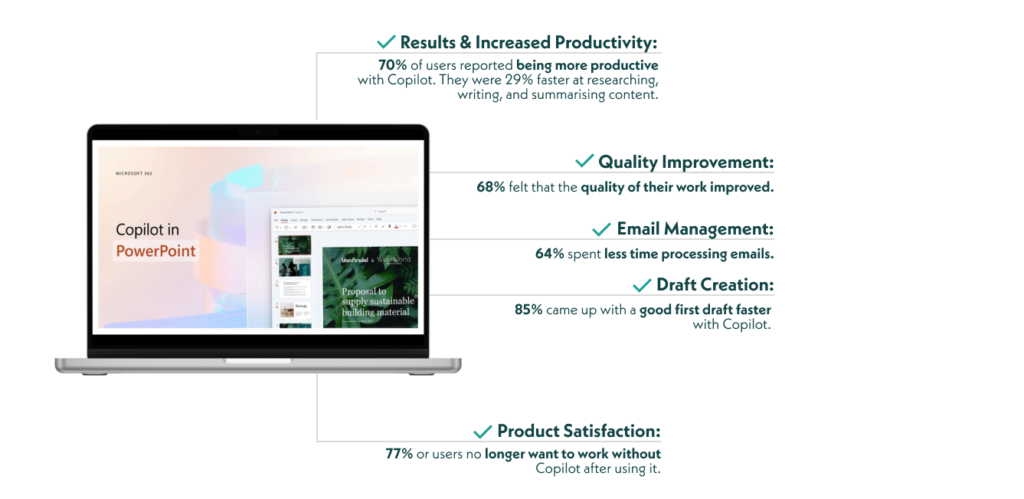

Copilots are just one example of the potential generative AI has to enhance business efficiency in numerous ways, and many other applications can be implemented across different departments within your company. By leveraging generative AI’s capabilities, businesses can significantly improve productivity, quality, and innovation.


For the company, generative AI can automate routine tasks, streamline processes, and provide insights through data analysis, leading to greater productivity and higher-quality outputs. It also opens up new business models by enabling rapid prototyping and innovation. For clients, generative AI offers a more personalised and cost-effective experience. It can tailor products and services to individual preferences, improve customer support through intelligent chatbots, and reduce operational costs, ultimately enhancing customer satisfaction. For employees, generative AI fosters a more empowered and satisfying work environment. It can take over mundane tasks, allowing employees to focus on more strategic and creative endeavours, thus increasing their engagement and job satisfaction.


By improving these three pillars – company efficiency, client experience, and employee satisfaction – generative AI positions businesses to thrive in an increasingly competitive landscape.
How to start
The “WINS” work framework, introduced in the Harvard Business Review, provides a structured approach for companies to determine when to start paying attention to the changes brought by new technology. “WINS” stands for tasks, functions, or even entire industries that are dependent on the manipulation and interpretation of Words, Images, Numbers, and Sounds. The foundation of this framework is the recognition that generative AI has the potential to become powerful tools for WINS work, driving significant improvements and innovations in these areas.
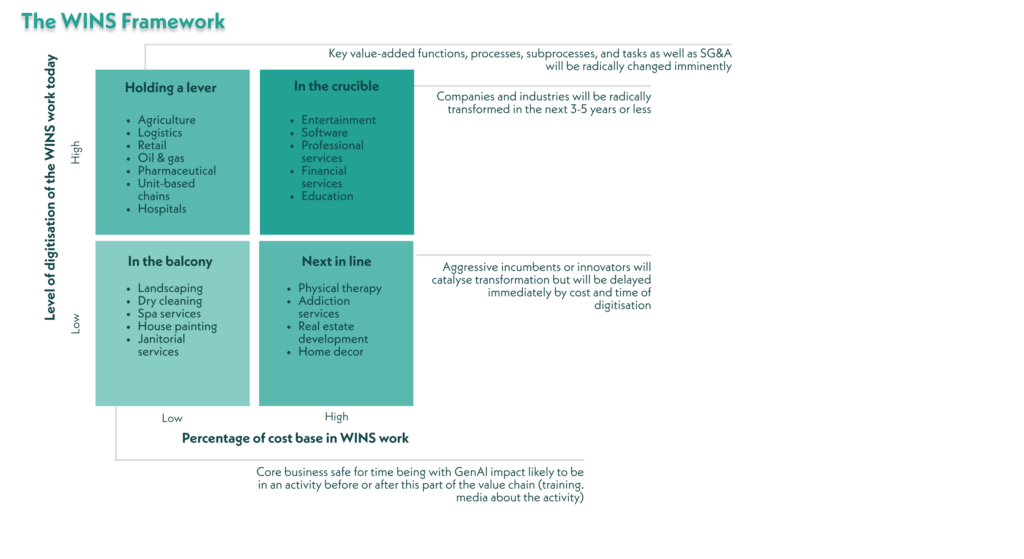

Companies that are very dependent on WINS work need to act immediately to stay competitive and to benefit from the productivity and cost returns that Generative AI can offer.
Understanding how urgent it is to pay attention to Gen AI is only the beginning of the journey and companies can face a lot of challenges during the implementation. A survey conducted with US business executives regarding the integration of new technologies into their businesses reveals that one of the primary adoption challenges is ensuring the results and value generated by technologies such as generative AI. Additionally, managing change with employees is highlighted as one of the most relevant concerns along with the costs of adopting a new technology.
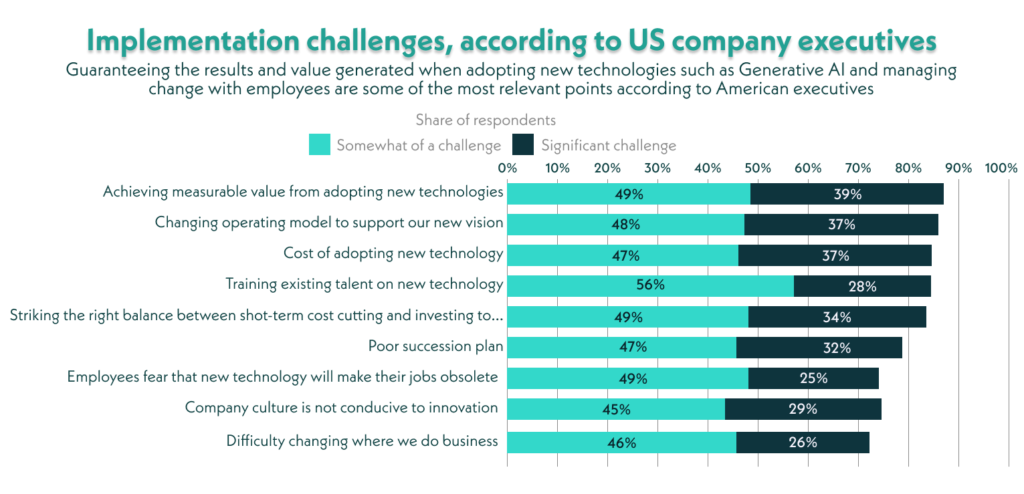

This highlights the importance of having a clear comprehension of how generative AI will generate value for your company. By doing so, you can create the right incentives, by selecting the target areas, keep the sponsors committed and focus on selecting real pain points, and prioritise the most promising opportunities effectively by following some good practices.
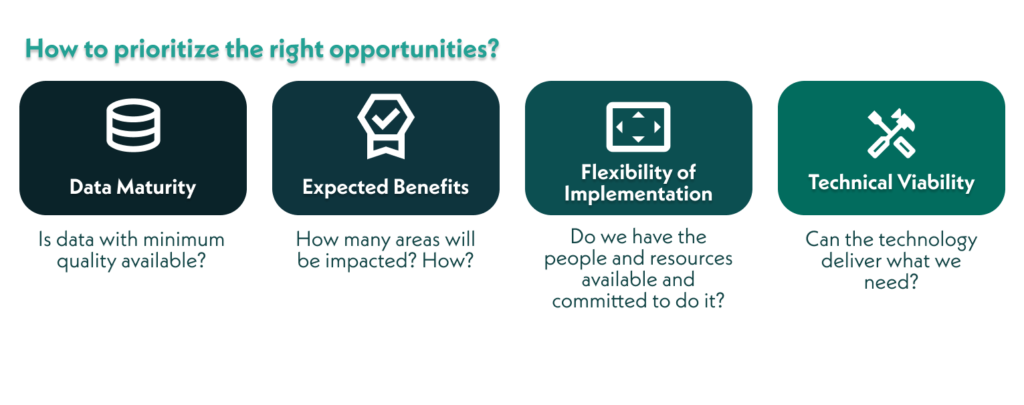

Business Transformation Model
Visagio’s business transformation approach identifies the potential of Generative Artificial Intelligence on three main business fronts: operational, commercial, and digital.
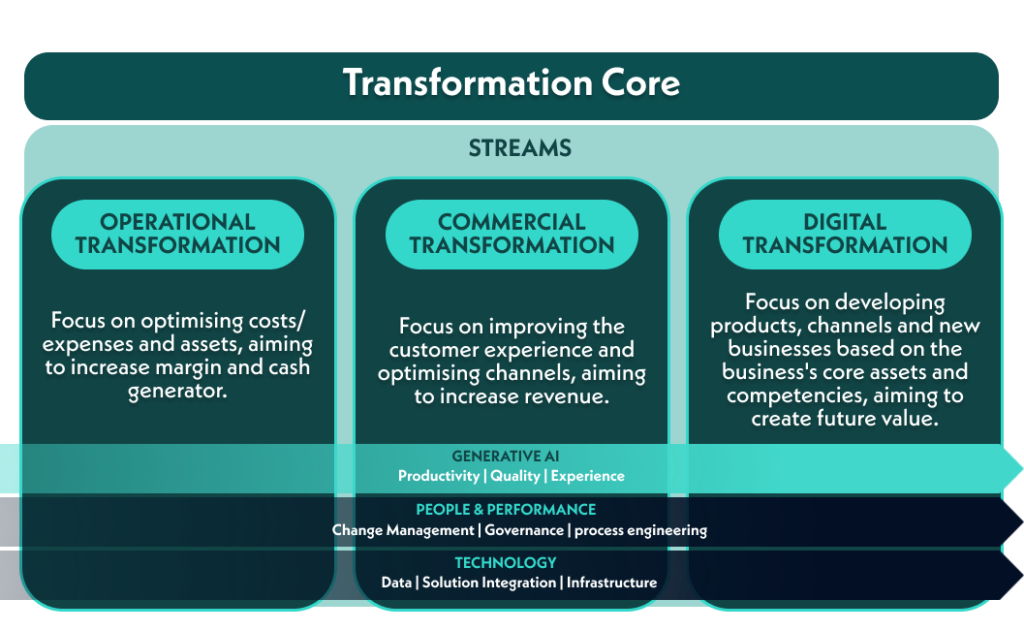

Visagio has supported clients in the experimentation and accelerated implementation of Generative AI solutions to ensure business productivity, as well as increasing quality and customer and employee satisfaction.
If you want to find out more about Visagio can help you to start this journey, message us at contact@visagio.com.
About the authors
Karina Bataglia is a Management Consultant at Visagio with extensive experience in digital transformation, implementation projects to improve efficiency, leverage companies’ results, and strategic plan definition. She has worked across a broad range of industry sectors, including mining, retail and cash & carry, telecommunications, the food and beverage industry, and logistics.


